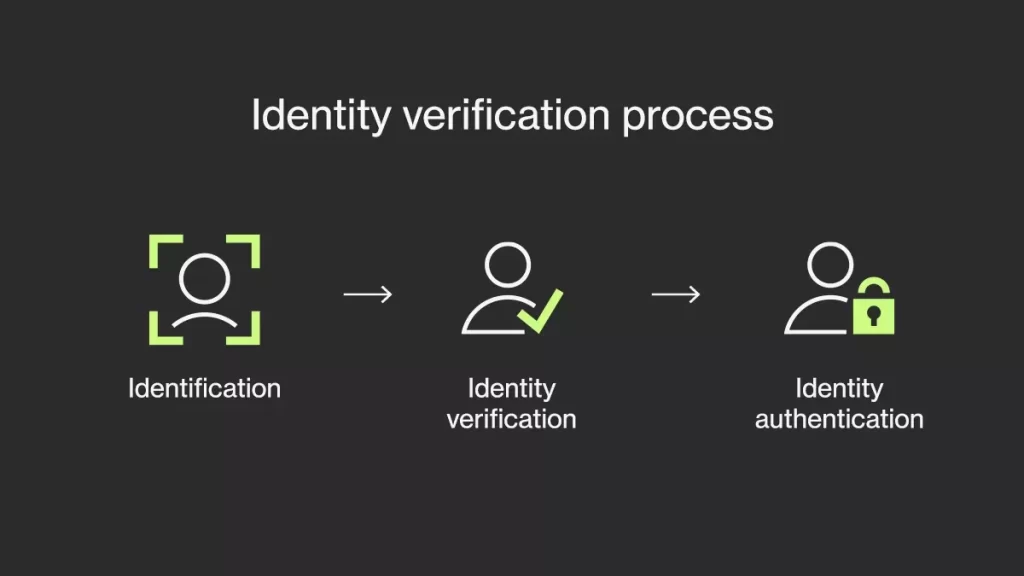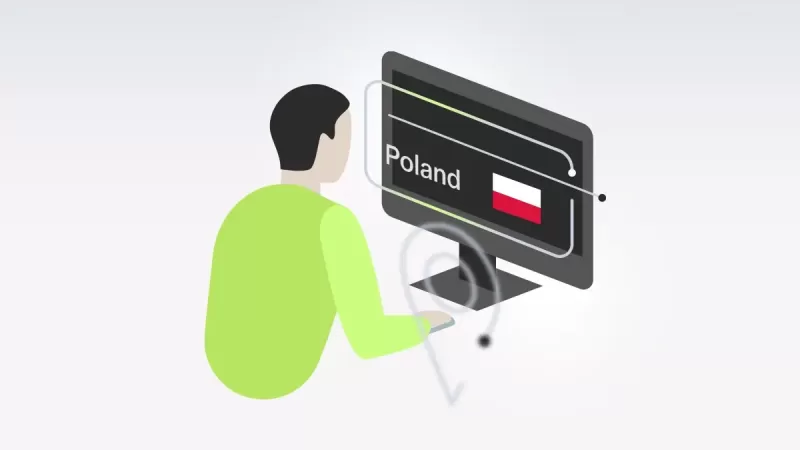Every year, millions of people worldwide suffer at the hands of identity thieves. By impersonating a victim, fraudsters get access to their credit cards, open bank accounts to make unauthorized purchases or obtain loans. In a 2022 survey, respondents reported total losses of $42 billion due to fraud. As a result, regulators keep introducing stricter provisions to ensure that financial institutions and other regulated industries take responsibility for financial crime prevention. The most important safety mechanism that regulators enforce to prevent fraud is identity verification. This article explains everything you need to know about this procedure and how it protects your clients and keeps your service safe.
What Is Identity Verification?
For a long time, financial institutions relied on manual identity verification (IDV). Nowadays, you wouldn’t even think of going to a bank without your ID. But the new industry of neo banks and the pandemic in 2020, which forced faster digitization, have made digital identity verification the new norm.
Identity verification is the process of confirming the legitimacy of someone’s identity. While a bank representative would ordinarily match the faces to the photos on identity documents and perform necessary registry checks, digital IDV employs cutting-edge technology to confirm who people are.
In essence, the process is used to determine a person’s real identity. It is a reliable procedure that prevents financial crimes, such as money laundering and identity theft, by stopping a criminal in their tracks. It is frequently used in non-regulated industries to ensure the safety of their services.
Why Is Digital Identity Verification Important?

Identity verification isn’t a mere regulatory burden. In fact, it comes with benefits for both businesses and their customers.
Fighting Financial Crime and Fraud Prevention
The most crucial benefit of identity verification and its primary purpose is to fight identity fraud and financial crime. Carefully checking the identity of each client will clear up discrepancies, spot fake identity documents and synthetic identities, verify age, and gather other important data. This way, your service and its users will be secure.
Improving Accessibility
Implementing a digital identity verification service makes various services more accessible. It is also a crucial part of the global expansion of your business.
Streamlining the Customer Experience
Implementing digital IDV can alleviate the burden of remembering to update necessary information. In the past, clients were expected to update their information when it changed. Now, automatic reminders and information checks have taken over the process. It also makes the account opening process much faster for the customer, increasing their chance of staying with the service.
Helping to Avoid Penalties for Non-Compliance
In 2019, global penalties for non-compliance with anti-money laundering (AML), know your customer (KYC), and sanctions regulations totaled $36 billion. In addition to the financial loss, failing to comply with regulations can hurt a company’s reputation and can cause it to lose customers.
By using a digital identity verification service, companies can prevent fraud and reduce fines.
Protecting Minors
Many services that offer age-restricted content continue to employ ineffective age verification methods. Customers are frequently asked to confirm their legal age by pressing a button or entering their birthdate. With these types of checks, children can easily cheat their way onto age-inappropriate platforms.
On the other hand, identity verification technology makes it easy for providers of adult content to stop children from using their services. For example, Ondato’s age verification system determines a user’s age range by asking them to take a selfie. The system then places the user in an age group that is 95 percent accurate. If the user is deemed too young, they are required to provide identification.
How Does Identity Verification Work?
Identity Verification Process

The ID verification process consists of three major steps:
- Identification: collecting and documenting relevant user data, either manually or automatically.
- Identity verification: ensuring that the collected data is legitimate and not stolen or forged.
- Identity authentication: revalidating returning users’ identities before granting them access to the service.
The customer is typically asked to provide their ID only during the onboarding process, unless the document has expired. However, their identity should be verified several times during the customer lifecycle. Meanwhile, authentication may be necessary each time a customer returns to the platform.
Identity Verification Methods
The most common ways to perform digital identity verification are:
- Photo-based identity verification. It works by mapping biometric data from a customer’s selfie. It is a quick and simple method to onboard consumers while complying with KYC regulations.
Ondato’s photo-based identity verification process involves two parts:
- A person snaps a selfie. The liveness detection guarantees that the individual is present and isn’t utilizing any spoof artifacts.
- A person takes a photograph of their identity document. Then, their biometric face data is compared to the ID photo. The verification is completed after the system automatically performs registry, PEP, and sanctions checks. The process usually takes less than 60 seconds.
- Video-based identity verification. It is performed through a real-time video call. During the process, a person’s biometric and identification document data are captured automatically. Then, the data is analyzed for any spoofing attempts to ensure that the client is who they claim to be. Ondato’s video-based verification can be assisted by our well-trained KYC specialists or provide a platform for your specialists. All essential checks are completed automatically without delaying or interrupting the call.
- Upload-based identity verification. It can be used when regulations permit a person not to be present during the verification process. They are required to submit data manually. Registry checks are performed to verify a person’s identity and ensure the authenticity of provided documents. Upload-based identity verification efficiently replaces real-time procedures.
- NFC-based identity verification. The newest verification method on the market that allows for a smoother process. Users with NFC compatible phones can scan their documents to ensure security and accuracy without requiring extra time.
What Technology Can Be Used to Streamline the Digital Identity Verification Process?
Digital identity verification may appear to be a simple process, but only because it encompasses a wide range of technology to streamline the process. These are the most common features used to increase usability and conversion rates:
- Identity Document Verification is the process of determining the authenticity of a document. A document is analyzed for spoofing attempts and checked in various lost or stolen document registries. Driver’s licenses, social security cards, passports, birth certificates, and other documents can be used in the process.
- Biometric Verification is a method of identifying people by analyzing their unique biological characteristics. The AI-based technology maps out the biometric data of a person’s face and compares it to an image on an ID card or passport. This method effectively detects spoofing artifacts, such as masks or printed photos.
- Liveness Detection is an important additional step in ID and biometric verification to ensure that customers are physically present and that their documents have not been tampered with. The liveness detection looks at movement, reflections, light, the background of a photo, and other details to find spoofing attacks.
- OTP (One Time Password) is a temporary password or a PIN code sent to a person via SMS or email. It is frequently used to add a second layer of security. OTP can also be used to authenticate users.
- NFC (Near Field Communication) enables compatible devices to extract and wirelessly transfer data from microchips. It is an enhanced security measure that allows for the quick reading of data from ID documents. NFC is frequently used to seamlessly onboard clients.
Identity Verification Use Cases
A wide range of industries must ensure that their clients are actual people before doing business with them. As a result, identity verification has a wide range of use cases.
It is widely used in the following industries:
- Financial services
- Cryptocurrency marketplaces
- Telecommunications
- Sharing economy
- eSports
- Travel and tourism
- Online gambling
- Adult content
- Retail
- Healthcare
- Education
- Others
How Ondato Can Help to Prevent Fraud
Fraud causes harm to businesses, financial institutions, and other industries. Every year, their customers lose large sums to identity thieves. Meanwhile, organizations face penalties for failing to comply with financial crime prevention regulations.
Automated ID verification is the most effective method of catching fraudsters. While doing it manually requires a significant amount of time and effort, the process can be easily streamlined by utilizing the Ondato service. Our automated solution enables you to onboard clients quickly while detecting various spoofing attempts such as masks or document alterations.
By delegating heavy lifting to our smart tool, you will save time, improve performance, and ensure safety.



